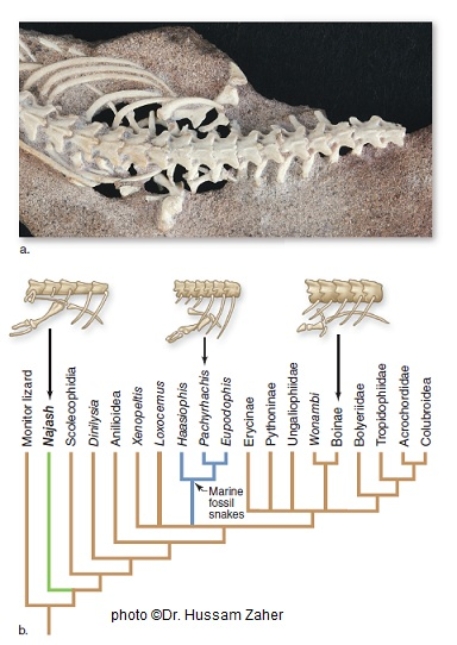Multiple Choice
Figuer: 
-A phylogenetic tree is shown in part (b) of the image above.Phylogenetic trees visually represent hypotheses of the evolutionary relationships and ancestry of species or species groups.In this case,Najash is placed in proposed context with other snake species,representing different groups of snakes around the world.What can you conclude about the evolution of sea snakes and the Najash species?
A) Najash is proposed as a separate group from other snakes, while the three fossil marine snakes are more similar to living snakes.
B) The phylogenetic tree shows that Najash, lower in the diagram, had the fossil marine snakes in its ancestry.
C) Najash diverged separately and earlier than the three fossil marine snakes, indicating only weak evolutionary relationship.
D) Both Najash and the three fossil marine snakes have ancestry traced back to an original snake species.
E) All of these answer options are correct, except that Najash did not have fossil marine snakes in its ancestry.
Correct Answer:

Verified
Correct Answer:
Verified
Q11: Amphibians,birds,and mammals look the most similar as<br>A)
Q12: When ocean levels dropped about 70 million
Q13: The abundant presence of ammonite fossils,corals,sponges,and crinoids
Q14: Which of the following is least likely
Q15: The name of the specialized field of
Q17: The fossil record is often incomplete,in part
Q18: The observation that most aquatic vertebrates (e.g.fish,penguins,and
Q19: Dinosaurs devoloped,became diverse and eventually became extinct
Q20: Placental mammals give birth to more fully
Q21: As recently as 2007,researchers found evidence of